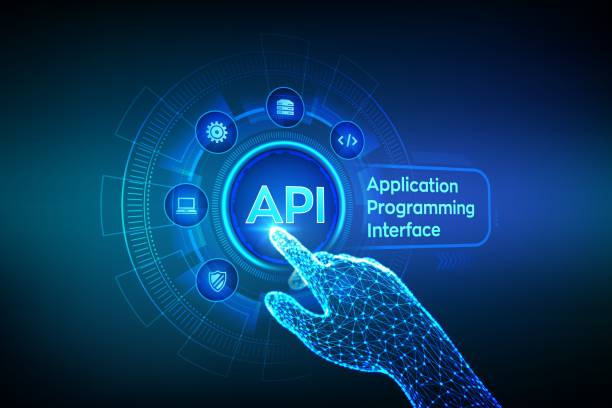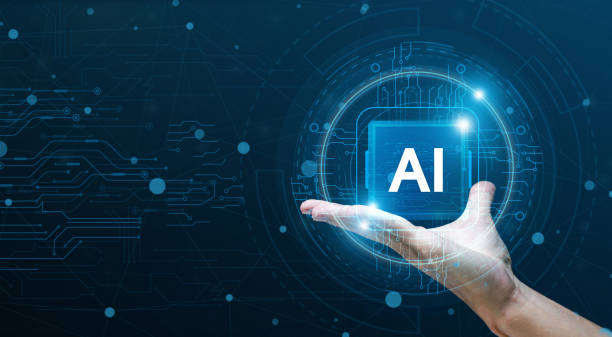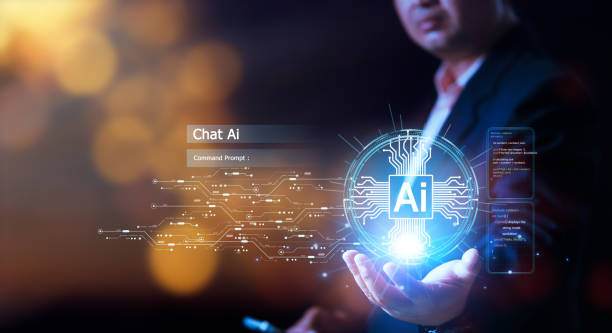What is an AI Robot and How Does it Work?
What is an AI Robot and How Does it Work?
#AI Robot (AI Robot) is a combination of two key technologies: #Artificial Intelligence and #Robotics.
Simply put, an AI robot is a physical machine that uses artificial intelligence algorithms to perform tasks that typically require human intelligence.
These tasks can include learning, reasoning, problem-solving, natural language understanding, and interacting with the surrounding environment.
The way an AI robot works is generally as follows: first, the robot collects data from the environment through various sensors (such as cameras, microphones, touch sensors, etc.).
This data is then transmitted to a central processing system (usually a computer).
The central processing system uses artificial intelligence algorithms to analyze the data and make decisions based on it.
The decisions made are then sent to the robot’s actuators (such as motors, arms, wheels, etc.) for the robot to perform the desired action.
For example, an AI robot designed to work in a warehouse might use cameras to identify objects, machine learning algorithms to recognize patterns, and robotic arms to move objects.
By learning from its experiences, the robot can gradually become more efficient in performing its tasks.
AI robots are among the discussed topics in the field of #technology and have wide-ranging applications in various industries.
These robots, utilizing AI capabilities, have the ability to perform complex and automated tasks.
To better understand how an AI robot works, it can be compared to the human brain and body.
Sensors play the role of human senses, the central processing system plays the role of the brain, and actuators play the role of muscles.
The difference is that the AI robot operates based on algorithms and computer programs.
Does your current company website not reflect your brand’s credibility and power as it should? Rasaweb solves this challenge for you with professional corporate website design.
✅ Increase visitor credibility and trust
✅ Attract more targeted customers
⚡ Click for free consultation!
Types of AI Robots Based on Application
Click here to preview your posts with PRO themes ››
Types of AI Robots Based on Application
AI robots are divided into different categories based on their application.
Some of the most common types include:
- Industrial Robots: These robots are used in factory production lines to perform repetitive, dangerous, or precise tasks.
They can perform tasks such as welding, painting, assembly, and packaging with high speed and accuracy. - Service Robots: These robots are designed to provide services to humans.
They can be used in hospitals, hotels, restaurants, and homes.
Some of their tasks include transporting items, cleaning, preparing food, and providing information. - Medical Robots: These robots are used in surgery, rehabilitation, and patient care.
They can perform complex surgeries with greater precision, assist patients with rehabilitation exercises, and continuously monitor patients’ vital signs. - Military Robots: These robots are used in military operations to perform dangerous or inaccessible tasks for humans.
They can be used as soldiers, guards, mine detectors, and drones. - Space Robots: These robots are used for space exploration and scientific research on other planets.
They can collect soil samples, take panoramic images, and gather weather data.
AI robots are used in various industries and are designed and utilized according to the needs of each industry.
In addition to this classification, AI robots can also be categorized based on their type of movement (such as wheeled robots, legged robots, flying robots, and underwater robots) and type of control (such as autonomous robots, semi-autonomous robots, and remote-controlled robots).
Advantages of Using AI Robots in Various Industries
Advantages of Using AI Robots in Various Industries
The use of AI robots in various industries offers numerous advantages, the most important of which include:
- Increased Productivity: AI robots can perform tasks with much higher speed and accuracy than humans.
They can also work 24/7 without fatigue, which leads to a significant increase in productivity. - Cost Reduction: Although purchasing and maintaining AI robots can be expensive, in the long run, they can significantly reduce costs.
They can reduce labor costs, errors, and waste. - Improved Safety: AI robots can perform dangerous or unpleasant tasks instead of humans, which leads to improved safety and health for employees.
- Increased Quality: AI robots can perform tasks with much higher precision and consistency than humans, which leads to increased quality of products and services.
- Innovation: AI robots can help companies develop new products and services.
They can analyze data, identify patterns, and provide new solutions.
Click here to preview your posts with PRO themes ››
Overall, the use of AI robots can help companies increase competitiveness, reduce costs, improve quality, and foster innovation.
| Industry | Application |
|---|---|
| Manufacturing | Assembly, Welding, Painting |
| Healthcare | Surgery, Rehabilitation, Pharmacy |
| Logistics | Warehousing, Transportation |
| Agriculture | Planting, Harvesting, Spraying |
Challenges of Implementing AI Robots
Challenges of Implementing AI Robots
The implementation of AI robots comes with several challenges, among the most important of which are:
- High Cost: Purchasing, installing, and maintaining AI robots can be very expensive.
This is a serious challenge, especially for small and medium-sized companies. - Need for Expertise: Implementing and maintaining AI robots requires high expertise.
Companies must hire or train specialized personnel. - Employee Resistance: Some employees may resist the use of AI robots.
They may be concerned about losing their jobs or feel that robots will replace them. - Ethical Issues: The use of AI robots can raise numerous ethical issues.
For example, who is responsible for decisions made by robots? How can we ensure that robots act fairly and without discrimination? - Security: AI robots can be vulnerable to cyberattacks.
Hackers can take control of robots and use them for malicious purposes.
To overcome these challenges, companies must develop a comprehensive strategy for implementing AI robots.
This strategy should include a detailed assessment of needs, selection of the most suitable robots, employee training, development of ethical policies, and adoption of appropriate security measures.
For successful use of AI robots, companies must pay attention to these challenges and find appropriate solutions for them.
AI robots are increasingly used in various industries, but their successful implementation requires careful planning and proper management.
Did you know that 85% of customers check your company’s website before any interaction?
With Rasaweb, build the corporate website your credibility deserves.
✅ Increase customer credibility and trust
✅ Attract high-quality leads
⚡ Get a free website design consultation
The Future of AI Robots and Their Impact on Our Lives
The Future of AI Robots and Their Impact on Our Lives
The future of AI robots looks very bright.
With continuous advancements in artificial intelligence and robotics, AI robots are becoming smarter, more efficient, and cheaper day by day.
It is expected that in the near future, AI robots will be present in all aspects of our lives.
Some predictions about the future of AI robots include:
- Increased Automation: AI robots will automate many jobs.
This can lead to increased unemployment, but it can also create new opportunities for new jobs. - Improved Health: AI robots can help doctors diagnose and treat diseases.
They can also assist the elderly and people with disabilities in performing daily tasks. - Increased Safety: AI robots can perform dangerous tasks instead of humans.
This can lead to a reduction in accidents and injuries. - Increased Productivity: AI robots can perform tasks with much higher speed and accuracy than humans.
This can lead to increased productivity and economic growth. - Changing Our Interaction with Technology: AI robots can change how we interact with technology.
They can help us with daily tasks, provide us with the information we need, and interact with us.
However, it is important to also consider the challenges and potential risks of using AI robots.
We must ensure that AI robots act fairly and without discrimination, protect our privacy, and are not used for malicious purposes.
AI robots promise an exciting future, but they must be handled with care and responsibility.
Key Tips for Choosing the Right AI Robot
Key Tips for Choosing the Right AI Robot
Choosing the right AI robot can be a difficult decision, especially if you are not familiar with this technology.
To help you with this decision, here are some key tips:
- Determine Needs: Before starting your search, you must accurately determine your needs.
What tasks do you want the robot to perform? What is your budget? What skills do you possess? - Research: After determining your needs, you should research different types of AI robots.
What features do they have? What are their advantages and disadvantages? What is their price? - Compare: After conducting your research, you should compare different robots with each other.
Which robot best meets your needs? Which robot offers the best value for money? - Test: Before purchasing, you should test the robot.
Does the robot work correctly? Is the robot easy to use? Is the robot compatible with your existing systems? - Support: After purchase, you must ensure technical support for the robot.
Does the manufacturer provide technical support? Do they provide the necessary training?
By following these key tips, you can choose the right AI robot that will help you achieve your goals.
Choosing the right AI robot can help improve productivity and reduce costs.
Case Study of Successful AI Robot Applications
Case Study of Successful AI Robot Applications
To better understand the applications of AI robots, here are a few examples of their successful uses in various industries:
- Amazon uses AI robots for warehousing and product transportation.
These robots have helped increase the speed and accuracy of warehousing operations. - Google uses AI robots to develop self-driving cars.
These vehicles can help reduce accidents and improve traffic. - IBM uses AI robots to provide customer services.
These robots can answer customer questions, solve their problems, and provide them with the information they need. - Boston Dynamics develops AI robots for use in the military and other industries.
These robots can assist humans in harsh and dangerous conditions.
These are just a few examples of successful AI robot applications.
With continuous advancements in this field, it is expected that we will see more applications of AI robots in various industries in the future.
AI robots have achieved significant success in various industries and have helped improve efficiency and reduce costs.
Comparing AI Robots with Other Automation Technologies
Comparing AI Robots with Other Automation Technologies
AI robots are just one type of automation technology.
Other automation technologies include:
- Robotic Process Automation (RPA): RPA uses software to automate repetitive and rule-based tasks.
- Machine Learning (ML): ML uses algorithms to learn from data and predict outcomes.
- Internet of Things (IoT): IoT is a network of internet-connected devices that can collect and exchange data.
AI robots have several differences from other automation technologies:
- Intelligence: AI robots possess artificial intelligence, which allows them to learn, reason, and solve problems.
Other automation technologies usually lack this capability. - Flexibility: AI robots are more flexible than other automation technologies.
They can perform various tasks and adapt to different conditions. - Complexity: AI robots are more complex than other automation technologies.
They require more expertise for implementation and maintenance.
In general, AI robots are suitable for complex and unpredictable tasks, while other automation technologies are suitable for simple and repetitive tasks.
AI robots have greater intelligence and flexibility compared to other automation technologies.
| Feature | AI Robot | RPA |
|---|---|---|
| Intelligence | High | Low |
| Flexibility | High | Low |
| Complexity | High | Low |
| Application | Complex tasks | Repetitive tasks |
Did you know that poor online store design can drive away up to 70% of your potential customers? Rasaweb transforms your sales with professional and user-friendly e-commerce website designs.
✅ Significant increase in sales and revenue
✅ Full optimization for search engines and mobile
⚡ [Get a free consultation from Rasaweb]
Impact of AI Robots on the Job Market
Impact of AI Robots on the Job Market
AI robots can have a significant impact on the job market.
On one hand, they can automate many jobs, leading to increased unemployment.
On the other hand, they can create new opportunities for new jobs.
AI robots can be both a threat and an opportunity for the job market.
Some jobs most at risk of automation include:
- Repetitive and rule-based jobs
- Manufacturing jobs
- Clerical jobs
- Transportation jobs
Some jobs that are likely to flourish in the future include:
- Jobs related to artificial intelligence and robotics
- Jobs related to healthcare and elderly care
- Jobs related to education
- Creative and artistic jobs
To prepare for the impact of AI robots on the job market, individuals must keep their skills updated, continue lifelong learning, and be ready for potential changes.
Governments and organizations must also develop policies to support vulnerable employees and create new job opportunities.
Preparing for changes caused by AI robots in the job market is essential.
Additionally, AI robots can help create new job opportunities and improve working conditions.
Ethical Issues Related to AI Robots
Ethical Issues Related to AI Robots
The use of AI robots raises several ethical issues that need to be addressed:
- Responsibility: Who is responsible for decisions made by robots? If a robot makes a mistake, who should be held accountable?
- Privacy: Robots can collect a lot of information about us.
How can our privacy be protected? - Discrimination: Robots can discriminate based on their algorithms.
How can discrimination be prevented? - Security: Robots can be vulnerable to cyberattacks.
How can the security of robots be protected? - Impact on Humans: AI robots can have a significant impact on human lives.
How can we ensure that this impact is positive?
To address these ethical issues, laws and regulations for the use of AI robots must be developed.
Furthermore, attention should be paid to educating and raising awareness about these issues.
Addressing ethical issues related to AI robots is essential to ensure the responsible use of this technology.
AI robots must be designed in a way that benefits humans and prevents harm to them.
Frequently Asked Questions
| Question | Answer |
|---|---|
| What is an AI robot? | It is a robot that uses artificial intelligence capabilities to understand its environment, reason, learn, and make decisions to perform complex tasks independently. |
| What is the main difference between a regular robot and an AI robot? | AI robots can learn and adapt to their environment, while regular robots typically operate based on fixed, predetermined programming. |
| In what fields are AI robots used? | In fields such as industry (production lines), medicine (robotic surgeries), services (customer support, smart vacuum cleaners), exploration (space and underwater), and entertainment. |
| How do AI robots learn? | They acquire new skills through machine learning and deep learning algorithms, by analyzing large data sets and identifying patterns. |
| Can AI robots have emotions? | Currently, no. They can recognize or simulate emotions, but they do not experience actual emotions like humans. |
| What are the main advantages of using AI robots? | Increased productivity, reduced human error, performance of dangerous or repetitive tasks, and provision of innovative and efficient services. |
| What challenges exist in the development of AI robots? | Need for abundant and quality data, complexity of algorithms, ethical issues, cybersecurity, and high research and development costs. |
| Are AI robots dangerous for humans? | With adherence to safe design principles and ethical regulations, no. Concerns are more related to social and economic impacts such as changes in the job market. |
| What is an example of an AI robot in daily life? | Smart vacuum cleaner robots (like Roomba) that automatically map and clean the house, or smart voice assistants (like Siri and Alexa). |
| How is the future of AI robots predicted? | They are expected to become smarter, more autonomous, and capable of more complex interactions with humans, playing a more prominent role in industry, medicine, transportation, and daily life. |
And other services of Rasaweb advertising agency in the field of advertising
Smart SEO: A combination of creativity and technology for campaign management by Google Ads management.
Smart Marketing Automation: A dedicated service for growing campaign management based on user experience customization.
Smart Advertising Campaign: Revolutionize click-through rates with precise audience targeting.
Smart Conversion Rate Optimization: Designed for businesses seeking online growth through the use of real data.
Smart Content Strategy: An innovative service for improving SEO ranking through the use of real data.
And over a hundred other services in the field of internet advertising, advertising consultation, and organizational solutions
Internet Advertising | Advertising Strategy | Advertorials
Resources
AI Robot on Faradars Magazine
An article on Virgool about AI robots
Introduction to Types of Smart Robots on Digiato
The Topic of Artificial Intelligence in the World and Iran (IRNA)
Rasaweb Afarin, a leading digital marketing agency, paves the way for your business’s success. From professional e-commerce website design to comprehensive SEO strategies, we are ready to distinguish your brand in the online space and bring it to its peak.
📍 Tehran, Mirdamad Street, next to Bank Markazi, Kazeroon Jonubi Alley, Ramin Alley, No. 6














